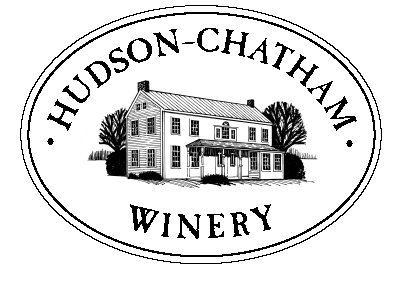Official Maple Weekend Pancake Breakfasts
March 17th
Arcade Center Farm Pancake House 7298 Route 98, Arcade
Beaver Meadow Audubon Center 1610 Welch Road, North Java
Burnham's Pure Maple14453 County Route 63, Adams Center
Cartwright’s Maple Tree Inn County Road 15A, Angelica
Dry Brook Sugar House 432 Chambers Road, Salem
Falconer Rotary ClubFalcon’s Nest, East Main Street, Falconer, NY 8-11 am
Gowanda Fire HallEast Main Street, Gowanda 7-11 am
Maple Hill Farm & Howe Cavern's Restaurant107 C Crapser Road, Cobleskill
Mapleland Farms 647 Bunker Hill Road, Salem
Moore’s Maple Shack & Pancake House 10397 Galen Hill Road, Freedom
Rathbun’s Maple Sugarhouse & Restaurant 1208 Hatch Hill Road, Granville
Remsburger Maple756 Traver Road, Pleasant Valley
Rushville Firemans FeastWharehouse Street, Rushville
Shaver-Hill Maple Farm450 Shaver Road, Harpersfield
Sprague’s Maple Farm 1048 Route 305, Portville
Stonehouse Farm305 Lynk Road, Sharon Springs
Valley Road Maple Farm 190 Valley Road, Thurman
Vernon Verona High School 5275 State Route 31 in Verona 8am-2pm
March 18th
Alexander Gas & Steam ShowGillate Road, Alexander
Arcade Center Farm Pancake House 7298 Route 98, Arcade
Attica Fire DepartmentWater Street, near Main St., Attica 7:30 am-1:30 pm
Beaver Meadow Audubon Center 1610 Welch Road, North Java
Burnham's Pure Maple14453 County Route 63, Adams Center
Cartwright’s Maple Tree Inn County Road 15A, Angelica
Dry Brook Sugar House 432 Chambers Road, Salem
First Presbyterian Church of East Aurora9 Paine Street, East Aurora
Gustafson’s Maple Country USA 2507 Quaint Road, Falconer 10am-4pm
Kiwanis Club Annual Pancake BreakfastFiremen’s Recreation Hall, 2 Rod Road, Marilla 8am-1pm
Maple Hill Farm & Howe Cavern's Restaurant107 C Crapser Road, Cobleskill
Mapleland Farms 647 Bunker Hill Road, Salem
Moore’s Maple Shack & Pancake House 10397 Galen Hill Road, Freedom
Masonic-Eastern Star HallMain Street, Forestville 8am-12:30pm
Perry/Warsaw Airport6522 Perry-Warsaw Road
Rathbun’s Maple Sugarhouse & Restaurant 1208 Hatch Hill Road, Granville
Remsburger Maple756 Traver Road, Pleasant Valley
Rushville Firemans FeastWharehouse Street, Rushville
Sardinia Fire HallRoute 39, Sardinia
Shaver-Hill Maple Farm450 Shaver Road, Harpersfield
Shelby Fire HallRoute 63, Shelby Center 7am - 2pm
South Dayton Boy ScoutsSouth Dayton Fire Hall 8am-1:30pm
Sprague’s Maple Farm 1048 Route 305, Portville
Stonehouse Farm305 Lynk Road, Sharon Springs
Valley Road Maple Farm 190 Valley Road, Thurman
Vernon Verona High School 5275 State Route 31 in Verona 8am-2pm
March 24th
American Maple Museum9735 State Route 312 in Croghan
Arcade Center Farm Pancake House 7298 Route 98, Arcade
Burnham's Pure Maple14453 County Route 63, Adams Center
Cartwright’s Maple Tree Inn County Road 15A, Angelica
Dry Brook Sugar House 432 Chambers Road, Salem
Mapleland Farms 647 Bunker Hill Road, Salem
Moore’s Maple Shack & Pancake House 10397 Galen Hill Road, Freedom
Rathbun’s Maple Sugarhouse & Restaurant 1208 Hatch Hill Road, Granville
Remsburger Maple Farm & Apiary756 Traver Road, Pleasant Valley
Shaver-Hill Maple Farm450 Shaver Road, Harpersfield
Sprague’s Maple Farm 1048 Route 305, Portville
Valley Road Maple Farm 190 Valley Road, Thurman
Vernon Verona High School 5275 State Route 31 in Verona 8am-2pm
March 25th
American Maple Museum9735 State Route 312 in Croghan
Arcade Center Farm Pancake House 7298 Route 98, Arcade
Burnham's Pure Maple14453 County Route 63, Adams Center
Cartwright’s Maple Tree Inn County Road 15A, Angelica
Dry Brook Sugar House 432 Chambers Road, Salem
Hermon Fire Department Church Street in Hermon 4-6pm
Mapleland Farms 647 Bunker Hill Road, Salem
Moore’s Maple Shack & Pancake House 10397 Galen Hill Road, Freedom
Rathbun’s Maple Sugarhouse & Restaurant 1208 Hatch Hill Road, Granville
Remsburger Maple Farm & Apiary756 Traver Road, Pleasant Valley
Shaver-Hill Maple Farm450 Shaver Road, Harpersfield
Sprague’s Maple Farm 1048 Route 305, Portville
Valley Road Maple Farm 190 Valley Road, Thurman
Vernon Verona High School 5275 State Route 31 in Verona 8am-2pm




















